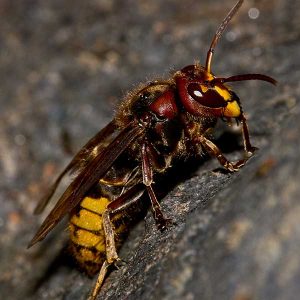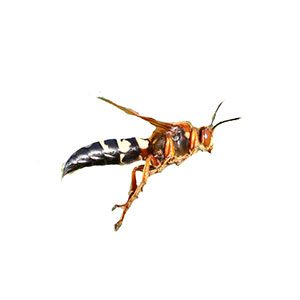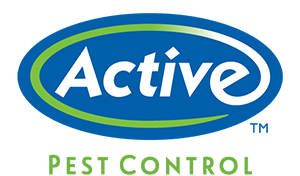Red Paper Wasps in Georgia
These wasps are usually a brown or red color, often with yellow patterns or banding. They range anywhere from 1.5-2.25 cm in length depending on what species you happen to be dealing with. They also possess a very noticeably pinched waist (wasp waist). Male wasps for most species in this genus have a mostly yellow, if not entirely yellow, face. The larval stages of red paper wasps feed on chewed-up insects, usually, caterpillars, fed to them by the adults. The adults feed on nectar, fruit juices, and sometimes other insects. The comb of a paper wasp nest is unique from other hornets and yellow jackets because it lacks a protective paper covering and is left exposed. If you crack open the paper covering of a hornet or yellow jacket nest you would find a very similar comb structure to that of the paper wasp stacked on top of one another. Do not attempt to mess with a hornet or yellow jacket nest unless you are positive it has been abandoned!
Red Paper Wasp Habitat
These wasps live in dry safe locations: eaves on homes, under porches, attic vents, etc. They have a paper nest that hangs from a central stem. This comb is what holds the eggs, larvae (juveniles), pupae (resting stage between larvae and adult), and adults. In the photo below you can see the adults, larvae (look like large worms inside the cells), eggs (small white ovals inside the cells), and capped cells containing pupae (cells that have a large white cap or bubble over the top of them).
Red Paper Wasp Behaviors, Threats, & Dangers
These insects can be dangerous due to the locations in which they build their nests. They tend to build their nests on homes or structures closely associated with humans. They are not typically aggressive unless they think you are a threat to their nest. If in an attic, the homeowner may not know of their presence and inadvertently disturb them. In the photo above, on the bottom left, you can see a wasp in a defensive position ready to attack the threat if the need should arise. If you happen to disturb a paper wasp nest, leave the area quickly and calmly (avoid flailing as it is perceived as a threat and can result in even more stings). Avoid trying to wait them out by jumping into a body of water (such as a pool or lake); they won’t go away but will wait for you to come up for air and then proceed to sting you (possibly even to death). Always call a professional wasp control expert for help with red paper wasps.






